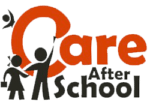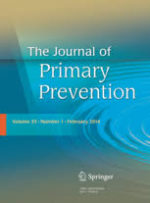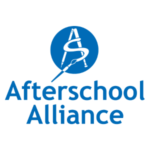General Research
This report, developed by the National Center for Education Statistics, contains statistics that address important aspects of the lives of youth, including family, schooling, work, community, and health. The report focuses on American youth and young adults 14 to 24 years old, and presents trends in various social contexts that may relate to youth education and learning.
The past year presented the afterschool community with many obstacles, most notably the economic crisis, but also many opportunities for growth. The year 2008 saw the celebration of ten years of 21st CCLC, one of the largest Lights On Afterschool rallies ever was held, and the Afterschool Alliance published the stories of so many whose lives have been transformed by afterschool in America’s Afterschool Storybook.
In 2007, funding for 21st Century Community Learning Centers increased for the first time since 2002. New research and polls show enduring and far-reaching support. More community leaders and policy makers are pledging their support for afterschool, and new dedicated state level funding streams are cropping up across the country. These positive developments, and more, as well as critical challenges that remain, are discussed in “2007 Afterschool Year in Review.” (January 2008)
This study finds that elementary students who were randomly assigned to attend the 21st Century Community Learning Centers after-school program were more likely to feel safe after school, no more likely to have higher academic achievement, no less likely to be in self-care, more likely to engage in some negative behaviors, and experience mixed effects on developmental outcomes relative to students who were not randomly assigned to attend the centers.
Funding Insecurity Puts Afterschool Programs at Risk – An August-September 2006 survey of more than 2000 afterschool programs examining issues related to funding and accessibility. Includes state level data where available.
Released in June, Uncertain Times 2009 finds that just as children in their communities need more help, afterschool program leaders across the country say they are being forced to increase fees and reduce staffing, activities and hours to cope with budget cuts and rising costs. Nearly all respondents to a survey of afterschool programs (95 percent) say the recession is affecting their communities, with 60 percent seeing more kids going hungry or families struggling to provide food for children, and half seeing increased homelessness. Yet afterschool programs are unable to provide as much help as children need because their budgets are down. Eighty-six percent of respondents say children in their communities need afterschool care and are unable to access it.
The survey, conducted online in July 2007, shows the high level of importance parents place on afterschool programs. Eight out of 10 (80 percent) parents say that their child needs a safe, positive place to go to afterschool and parents said their children want the same (82 percent). Based on responses from 603 parents, it’s clear that parents believe afterschool programs are critical in steering kids away from crime and improving academic performance and overall well-being.
By Eric Schaps and Daniel Solomon
Published in The Journal of Primary Prevention, Vol. 23, No. 3, Spring 2003.
Correlation and intervention studies of school environmental factors associated with student drug use and prevention are summarized. Major factors that emerge in the correlational studies are school supportiveness, sense of community, and opportunities for students to interact and to exert influence. Similar factors are involved in the intervention studies, with the development of a sense of community and attachment to school central, although the means by which these are approached differ across projects. A common conclusion seems to be that a supportive environment increases students’ attachment to school and thereby their inclination to abide by the school’s norms and values.
A review of the operating costs of a quality out-of-school-time program. Specifically, it looks at measuring the full costs of programs, examining the relationship between cost and quality, and developing cost estimate models.
This publication looks at the sustainability of 21st Century Community Learning Centers. It discusses ways in which grantees and policymakers alike can promote sustainability within these programs.
A Summary of Findings Highlighting the Need and Demand for More Afterschool Programs for Children and Older Youth. (Updated April 2008)
Information on child care costs and arrangements are collected on an intermittent basis in the Survey of Income and Program Participation (SIPP). Detailed information from recent surveys and historical trends in selected areas are also listed. The Survey of Income and Program Participation is currently the only source the Census Bureau uses to collect child care information from families.











